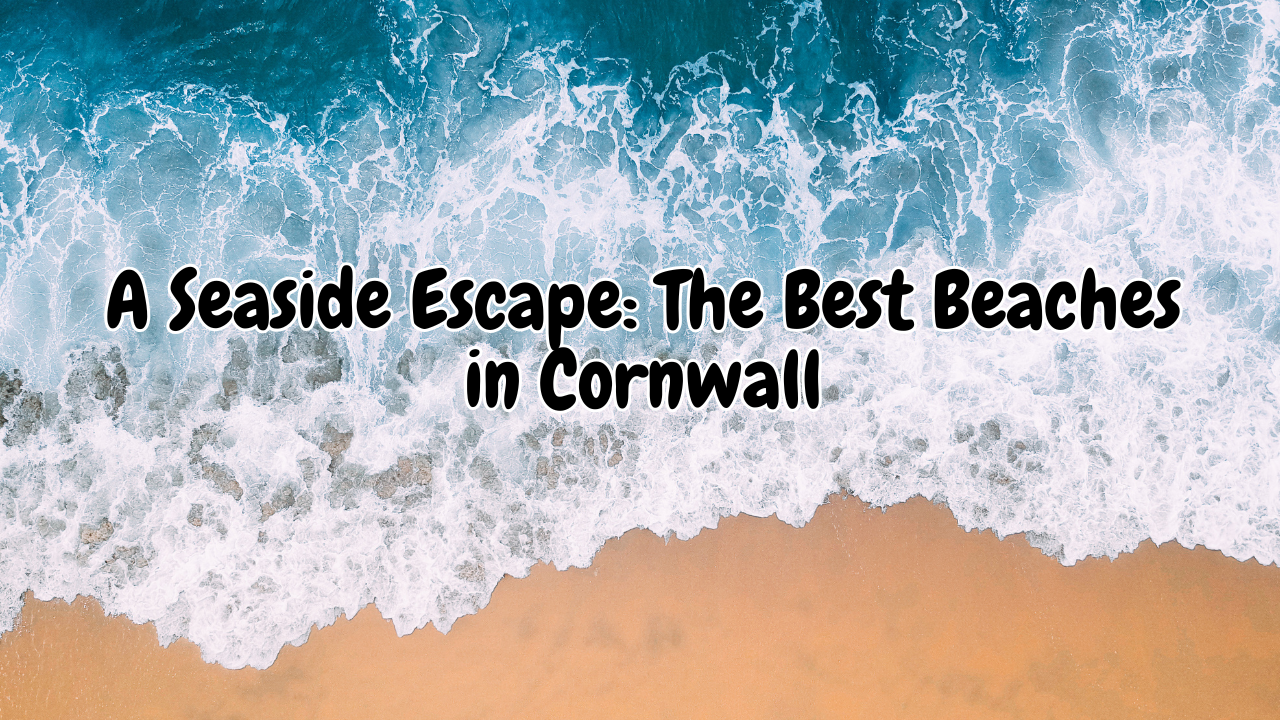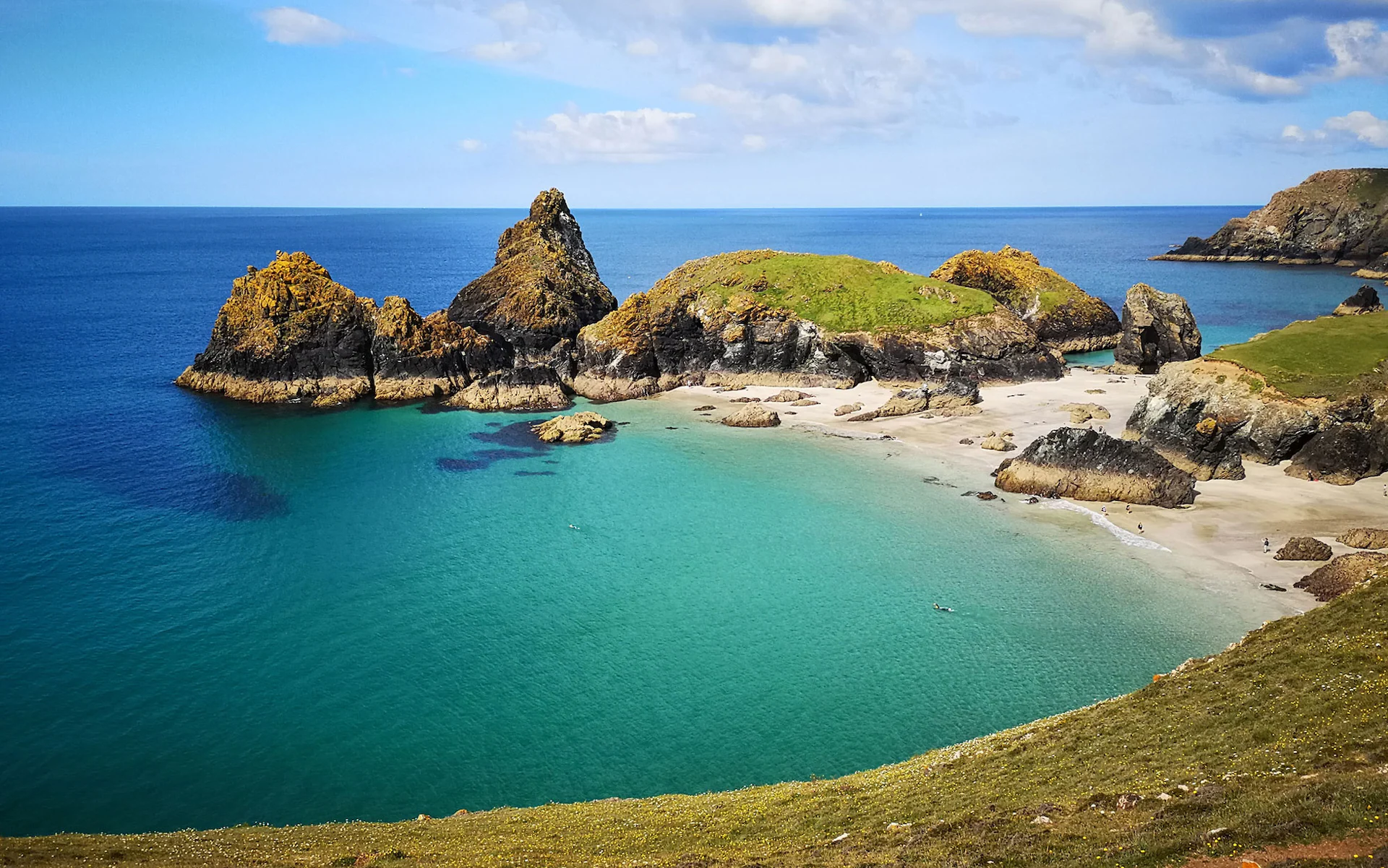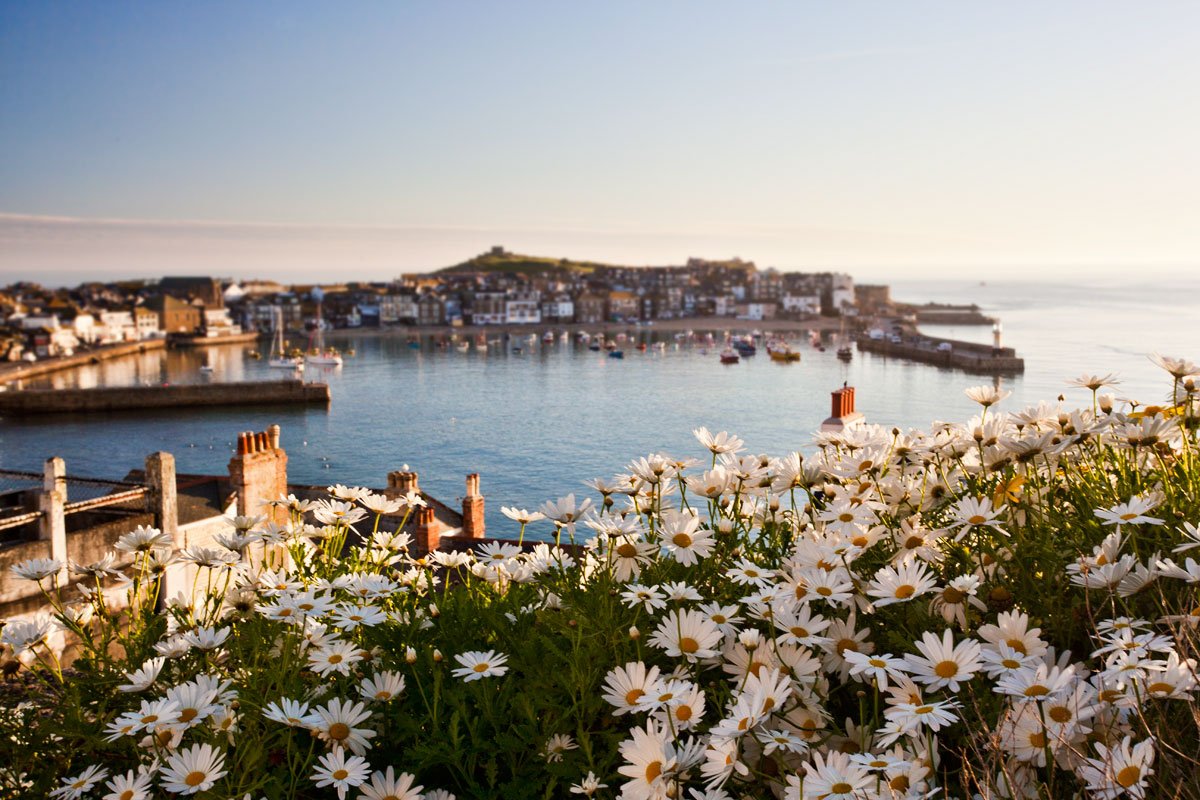Your basket is currently empty!

A Seaside Escape: The Best Beaches in Cornwall
Cornwall is a true paradise, offering some of the UK’s most beautiful and unspoiled beaches. Picture golden sands, sparkling turquoise waters, rugged cliffs, and hidden coves — it’s the ultimate destination for a peaceful yet exhilarating seaside getaway. When I first ventured down to Cornwall, I quickly discovered that it’s not just a place to relax, but an opportunity to explore the dramatic coastlines, experience local culture, and indulge in the finer things in life, like Cornish cream teas and hearty pasties.
In this guide, I’ll take you through my personal journey of discovering Cornwall’s best beaches, share what I loved most about each one, and offer practical tips to help you make the most of your trip. Whether you’re after adventure, relaxation, or something in between, Cornwall is the perfect place to experience it all.
A Journey Through Cornwall’s Most Stunning Beaches
1. Kynance Cove – The Jewel of The Lizard Peninsula
Nestled at the very southern tip of the UK, Kynance Cove is arguably Cornwall’s most iconic beach. My first visit here was like stepping into another world — one that I didn’t want to leave. With its striking serpentine rocks, fine white sand, and clear, turquoise waters, it’s easy to see why Kynance Cove is so beloved. The walk down to the beach is somewhat steep, but the effort is absolutely worth it.
At low tide, you’ll find yourself walking along the beach surrounded by dramatic rock formations, while small caves and rock pools dot the landscape. Swimming here feels almost otherworldly, and the surrounding cliffs provide a perfect backdrop for photos. If you’re up for a hike, the coastal path offers stunning views of the cove from above, allowing you to take in the full scope of this stunning spot.
The nearby cafe serves Cornish cream teas, and I couldn’t resist indulging in one while gazing out over the ocean. There’s also plenty of space for picnics, so pack your lunch and enjoy a relaxing day by the sea.


2. Porthcurno Beach – A Beach with a View of History
Porthcurno is one of Cornwall’s best-kept secrets, tucked away between two towering cliffs. Known for its pristine sand and crystal-clear waters, it’s the perfect place to escape the crowds. The beach is famous for being home to the Minack Theatre, an open-air amphitheater built into the cliffs that offers one of the most dramatic backdrops I’ve ever seen. When I visited, I was lucky enough to enjoy an afternoon performance at the theatre while looking out over the blue ocean.
The beach itself is incredibly peaceful, especially during the early morning hours when I had it all to myself. The gentle waves are perfect for swimming, and the surrounding cliffs make for an amazing setting. Don’t forget to explore the nearby coastal paths that offer breathtaking views of the beach and the surrounding area.
Whether you’re relaxing on the sand, enjoying the performance at Minack Theatre, or exploring the local area, Porthcurno provides a wonderful mix of relaxation and cultural history.


3. Fistral Beach – Surfing and Seaside Vibes in Newquay
If you’re looking for energy and excitement, Fistral Beach in Newquay should be at the top of your list. Known as one of the UK’s top surf beaches, Fistral is a hotspot for surfers from all over the world. I was immediately struck by the surf culture here — surfers catching waves, beachgoers soaking up the sun, and vibrant beach cafés lining the shore. Even if you’re not a surfer (like me), the atmosphere is contagious.
I spent a few hours just watching the surfers take on the impressive waves, while I relaxed on the sand with a book and a cold drink. Fistral is also home to several fantastic restaurants, and I highly recommend grabbing a bite at The Beach Hut — their fish and chips are a must-try. If you’re looking for more adventure, the town of Newquay is just a short walk away and offers plenty of fun shops, bars, and attractions.


4. St Ives Harbour Beach – A Picturesque Town Beach with Art and Culture
The town of St Ives is picturesque in every sense of the word, and its main beach, Harbour Beach, is the perfect spot to spend an afternoon. The soft sand and clear water make it ideal for families or anyone looking to relax by the sea. But what really makes St Ives Harbour Beach special is its combination of natural beauty and vibrant culture. After spending time on the beach, I wandered through the narrow streets of St Ives, exploring art galleries and unique shops. St Ives is a haven for artists, and its connection to the art world is evident everywhere you look.
The beach itself is relatively small, but it’s beautifully framed by the town’s colorful houses and the harbor. St Ives is also known for its stunning sunsets, so make sure to stick around for the golden hour — the view from the beach is absolutely magical.


How to Get to Cornwall from Central London
Now that you’re excited about Cornwall’s stunning beaches, you’re probably wondering how to get there from Central London. Here are a few options, each offering a different experience:
By Train:
One of the easiest and most comfortable ways to travel to Cornwall is by train. From London Paddington Station, I caught a direct train to Truro or Penzance, which took around 4.5 to 5 hours. The journey offers some truly scenic views as the train snakes along the coastline — a great way to get in the holiday mood. During the summer months, trains can get busy, so I recommend booking tickets in advance.
By Car:
If you’re up for a road trip, driving from Central London to Cornwall gives you flexibility and the opportunity to stop at various spots along the way. The journey usually takes about 5-6 hours, depending on traffic, and I found it really helpful to have a car to explore some of the more remote beaches. The drive along the A30 is fairly straightforward, but be prepared for narrow country roads once you get closer to the coastal villages.
By Coach:
For budget travelers, taking a coach is a viable option. Companies like National Express and Megabus offer affordable fares, with the journey taking around 7-9 hours. While the trip is longer, it’s an inexpensive way to reach Cornwall, and you can relax without the stress of driving.
Once you arrive, having a car or access to public transport will make it easier to get around and explore the different beaches.
Do’s and Don’ts for Visiting Cornwall’s Beaches
✅ Do:
- Check tide times: Some beaches, like Kynance Cove, are only accessible at low tide, so make sure to plan accordingly.
- Pack sun protection: Cornwall may not always be sunny, but when the sun does shine, it can be intense. Always pack sunscreen, a hat, and sunglasses to protect yourself.
- Explore beyond the beaches: Cornwall is full of scenic coastal paths, quirky villages, and historical sites. Take the time to explore beyond the sand.
- Try a Cornish pasty: I couldn’t resist — and I suggest you do the same! Cornwall’s pasties are iconic and a delicious part of the experience.
- Respect the environment: Cornwall is home to some of the most beautiful natural landscapes in the UK, so be sure to leave no trace of your visit.
❌ Don’t:
- Don’t litter: The beaches here are incredibly clean, so do your part to keep them pristine.
- Don’t swim in dangerous waters: Always be mindful of the sea conditions before taking a dip.
- Don’t disturb wildlife: Cornwall’s beaches are home to seals, dolphins, and a variety of seabirds. Admire them from a distance and never approach or touch them.
- Don’t rely solely on your phone: In some remote areas, mobile signals can be weak, so it’s helpful to have offline maps and guidebooks.
Conclusion: Why Cornwall Should Be Your Next Seaside Escape
Cornwall’s beaches are a world of their own, where nature’s beauty and coastal adventure collide in the most captivating way. Whether you’re a surfer, a nature lover, a history buff, or simply someone who wants to relax by the sea, Cornwall offers something for everyone. From the hidden gems like Kynance Cove to the bustling surf scene at Fistral, every beach has its own unique character and charm.
The journey to Cornwall may be a bit of a trek, but once you arrive, you’ll find it’s all worth it. The calm, the beauty, and the culture will stay with you long after you’ve left. So pack your bags, grab your camera, and get ready to fall in love with Cornwall- I promise, you won’t regret it.


Leave a Reply